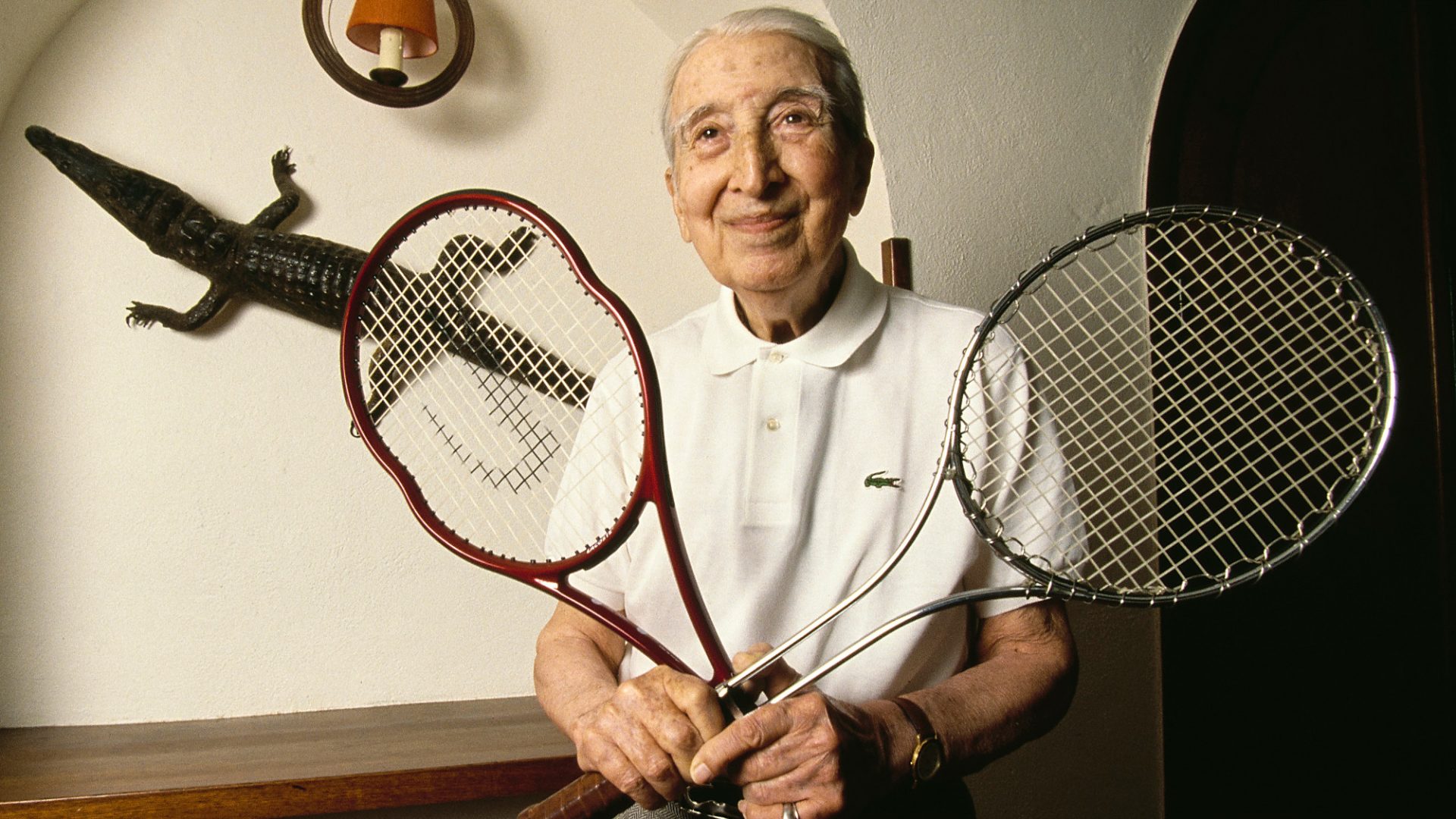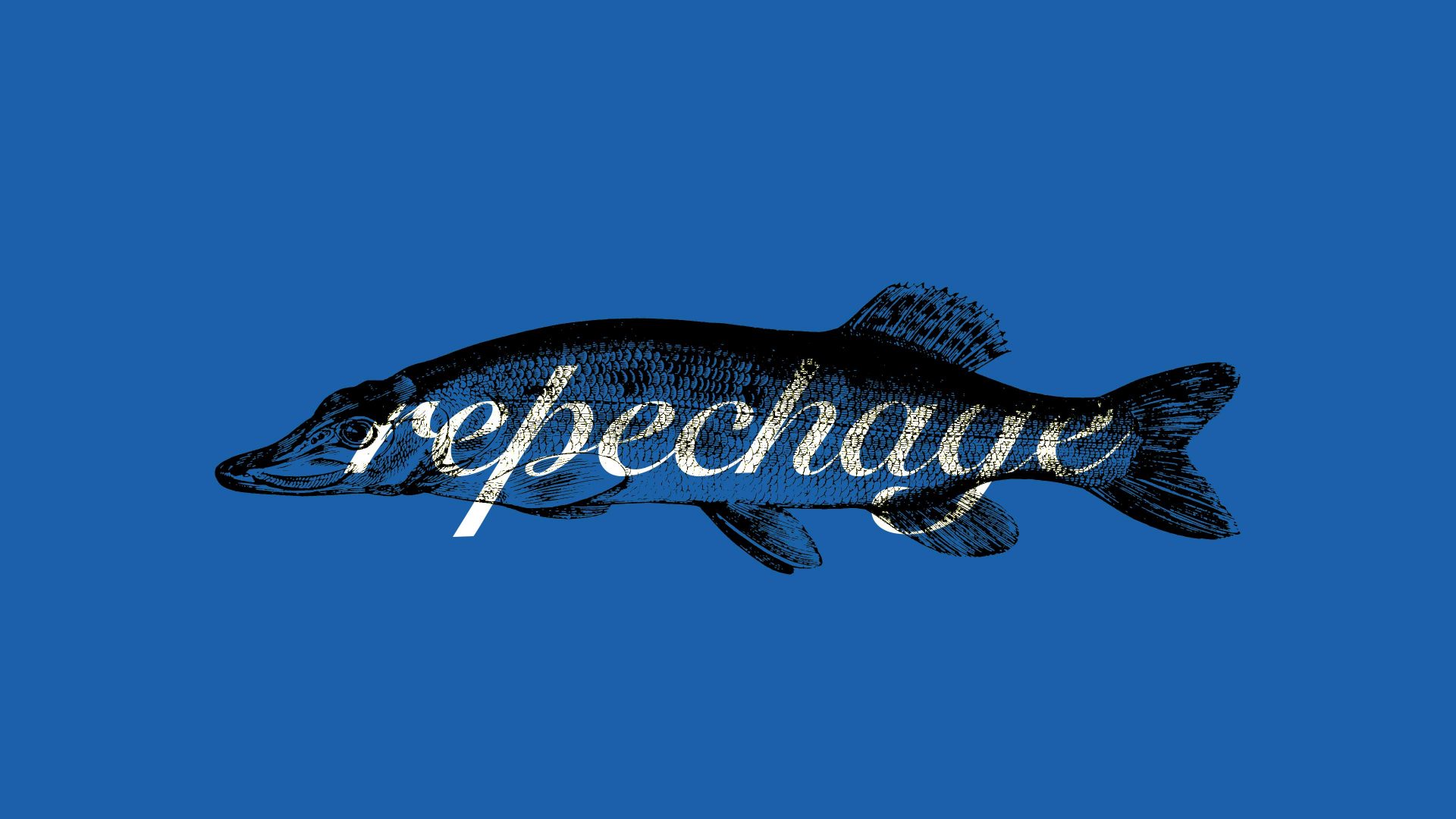The origin story of the famous Lacoste crocodile logo is often disputed but it goes something like this.
In August 1923, 19-year-old René Lacoste arrived in the USA as a member of the French Davis Cup team scheduled to play their Australian counterparts at the Longwood Cricket Club in Boston. He arrived in the city 24 hours after stepping off the liner “France” in New York and just a day ahead of his match against James O Anderson.
Hoping to shake the throb of the ship’s engines from their bones, Lacoste and his team captain Allan H Muhr went for a walk during which Lacoste stopped in front of the window of a high-class travel goods store. His eye was caught by an expensive crocodile skin suitcase. The teenager turned to Muhr and grinned.
“If I win my match tomorrow,” he said, “you buy me that suitcase.”
They shook hands on the deal but on this occasion Muhr’s money was safe. The following day Lacoste was defeated by Anderson despite a tenacious, battling performance against a much more experienced opponent.
Reporting on the match was George Carens from the Boston Herald Traveler who had learned of the previous day’s wager and was impressed by what he saw of the young Frenchman on the court. Win or lose, he wrote, the crocodile suitcase was wholly appropriate because René Lacoste was “tenacious in his grip, flashing a toothy omnivorous grin and relentlessly chewing away at his opponent”.
The comparison stuck, Lacoste became known throughout the tennis world as Le Crocodile and began wearing a crocodile illustration designed by his friend Robert George sewn to his clothing. By the end of the 20th Century the Lacoste logo represented one of the most famous brands in the world.
Yet René Lacoste deserves to be remembered for far more than his line of leisure wear. One of the famous Four Musketeers of French tennis in the 1920s with Jean Borotra, Toto Brugnon and Henri Cochet, Lacoste blazed briefly but brilliantly, winning Wimbledon twice, the US Open twice and the French Open three times, not
to mention playing 51 Davis Cup matches for France in a career that spanned barely seven years and was over by his mid-20s.
All this despite not being a technically gifted player, nor indeed ever being in the best of health. Aware of his limitations but ambitious and utterly in love with tennis, Lacoste succeeded through relentless practice and meticulous preparation, filling notebooks with observations on his own game and, crucially, his opponents’.
Lacoste’s success was even more remarkable considering that when he strolled through Boston that day as a French Davis Cup international it was barely four years since he first picked up a tennis racquet. He was 15 years old when he accompanied his father, an automobile magnate, on a visit to England where he was invited to try the game that became an instant obsession.
With his father’s reluctant approval, Lacoste postponed his studies and the career in the family business planned for him in favour of attempting to forge a career in professional tennis.
He was given five years. Within three he was the Wimbledon and French Open champion.
Lacoste’s success was based on steely relentlessness, a baseline game metronomic in its efficiency and a sensational lob. A slight man, he possessed an extraordinary mental stamina demonstrated to its fullest at the 1927 French Open final on the Paris clay against the brilliant American Bill Tilden.
The match was arguably the most keenly anticipated in French Open history. A record 8,000 spectators squeezed into the Stade Français to see two of the game’s supreme artists at the peak of their powers, both of whom had dropped only one set in their five-match runs to the final.
It was a match of contrasting styles, the agile, mercurial American against the dogged consistency of Lacoste, 12 years the American’s junior. The tension was palpable and when a fight broke out among spectators during the warm-up it distracted Tilden to the extent he opened the match serving two double faults. Lacoste won the first set, Tilden took the next two and by the third Lacoste was suffering terribly with cramp. Every shot was painful; at one point he spent more than a minute clinging to the net post in agony.
Yet his mental strength somehow carried him through to win the fourth set and take the match into a deciding fifth. The two men produced some immense rallies, many lasting for up to 50 returns, and an energy-sapping tie-break looked to have gone Tilden’s way when he earned himself two match points. Somehow the ailing Lacoste not only survived but secured an extraordinary 11-9 win in the final set to end a three-and-a-half-hour marathon, one of the greatest finals tennis has ever seen.
“I’ve never played better,” said a stunned Tilden. “That Frenchman is a machine.”
Such was the popularity of the Quatre Mousquetaires among the French public that the following year the Stade Roland Garros was built and opened to accommodate the vast crowds wishing to see them compete in the Davis Cup. Each grandstand was named after one of the quartet.
Yet by then Lacoste’s career was already entering its twilight. Respiratory and circulation issues saw to it that his 1929 French Open victory over Jean Borotra proved to be his swansong at just 25.
He was far from done with the game, however, developing a practice machine that could serve up tennis balls and commencing work on his famous short-sleeved, light cotton shirts with buttoned collars and the crocodile logo on the breast. He had always felt restricted by the heavy, long-sleeved shirts favoured by most players and the Lacoste shirt soon caught on.
The 1960s saw him develop the first steel tennis racquet, built with a split shaft, sold to the Wilson company in the US and marketed as the T2000. First seen at Wimbledon in 1963, by 1978 the T2000 had racked up 46 Grand Slam wins for the likes of Jimmy Connors and Billie Jean King.
“[Lacoste] was a genius,” wrote his great rival Tilden in 1948. “Shrewd, analytical, superb in technique. But when that was insufficient, he threw it to the winds and called on creative inventiveness. He was the perfect blend of defence and attack, a revolutionary, a tennis atom bomb. He left a gap in the game that nobody has ever filled.”
And the crocodile suitcase? It never left the shop window.
After all, a bet’s a bet.




